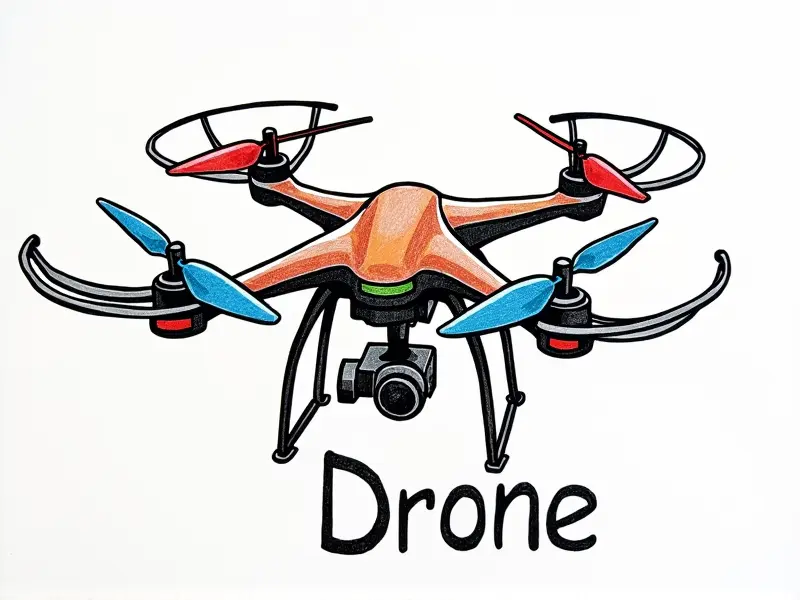How does iFlight drone work?

Unveiling the Magic of iFlight Drones
When it comes to drone technology, few names are as revered and respected as iFlight. Known for their cutting-edge FPV (First Person View) racing drones, these devices have revolutionized the way enthusiasts engage with aerial sports. This article delves into the intricacies of how an iFlight drone operates, exploring its unique features, controls, performance capabilities, and the science behind it all.
How Does iFlight's FPV Work?
The heart of any iFlight drone lies in its First Person View technology. This system allows pilots to see what their drone sees through a high-definition camera mounted on the front or underside of the aircraft. The video feed is transmitted wirelessly via an FPV receiver and transmitter, providing real-time footage to goggles worn by the pilot.
For iFlight drones, this often means integrating advanced cameras such as the DJI Osmo Action or GoPro Hero series, which offer superior clarity and frame rates crucial for high-speed racing. The video signal is usually transmitted through 5.8GHz FPV antennas, ensuring minimal latency and interference.
Mastering iFlight Drone Controls
Controlling an iFlight drone requires precision and skill. Typically, pilots use a radio control (RC) transmitter to command the drone's movements. The RC transmitters like Taranis QX7 or X9D Plus feature customizable switches, sticks, and joysticks that allow for fine-tuned adjustments.
These controls interact with the drone’s onboard flight controller, which processes input signals and adjusts motor speeds accordingly to achieve desired maneuvers. Pilots must learn how to balance throttle, pitch, roll, and yaw inputs efficiently to perform complex aerial tricks and stunts.
Exploring iFlight Drone Features
iFlight drones come packed with a range of features that set them apart from other models on the market:
- Battery Technology: High-capacity LiPo batteries provide extended flight times and high discharge rates necessary for sustained high-speed performance.
- Motor and Propeller Configurations: iFlight drones often use powerful brushless motors paired with carefully engineered propellers to achieve optimal thrust-to-weight ratios.
- Frame Design: Lightweight yet robust carbon fiber frames ensure durability while minimizing weight, crucial for achieving top speeds.
The Science Behind iFlight Drones
The functionality of an iFlight drone is rooted in aerodynamics and electronics engineering. The design must balance stability with agility to handle complex maneuvers at high velocities.
Electronically, the flight controller manages all aspects of operation from altitude control to obstacle avoidance using sophisticated algorithms. Components like GPS modules (for outdoor applications) and IMU sensors (Inertial Measurement Units) contribute to precise navigation and stabilization.
iFlight Drone Performance Revealed
Performance is a critical aspect of iFlight drones, particularly in the context of FPV racing where speed and agility are paramount. These drones can reach speeds exceeding 100 mph and perform sharp turns with minimal loss of velocity thanks to their optimized aerodynamic profiles and powerful propulsion systems.
Speed
The top-tier iFlight models boast impressive maximum velocities, often topping out at over 240 km/h (150 mph). This is achieved through a combination of high-torque motors and lightweight construction.
Aerodynamics
An aerodynamically efficient design minimizes drag while maximizing lift. iFlight engineers meticulously model each frame to ensure optimal air flow around the drone's body, reducing resistance and enhancing maneuverability.
Inside the Mechanics of iFlight Drones
The mechanical components of an iFlight drone are as crucial as its electronic systems. Each part is finely tuned for maximum efficiency:
- Motors: High-performance brushless motors capable of producing substantial thrust.
- Propellers: Custom-designed propeller blades optimized for speed and lift.
- Battery Pack: High-discharge rate LiPo batteries to support sustained high-power operation.
Understanding iFlight Drone Functionality
To truly understand how an iFlight drone operates, it's essential to recognize the synergy between its hardware and software components. The flight controller serves as the brain of the system, coordinating motor responses to input commands and sensor data.
The onboard processor continuously analyzes telemetry from GPS modules, accelerometers, gyroscopes, and barometric altimeters to maintain stability and control during flights. Advanced features like automatic return-to-home (RTH) functionality can be enabled for added safety.
What Makes iFlight Drone Stand Out?
iFlight drones stand out in the market due to several key factors:
- Innovation: Constantly pushing boundaries with new technologies and design concepts.
- Community Support: Strong community backing through forums, social media groups, and user events fostering a vibrant ecosystem around iFlight products.
- Customization Options: Extensive range of parts and accessories allowing users to tailor their drones to specific needs or preferences.
Demystifying iFlight Drone Operations
Mastery over an iFlight drone involves understanding its operational nuances. From setting up the FPV system correctly to fine-tuning control inputs, each aspect plays a vital role in achieving peak performance.
With proper setup and practice, pilots can unlock the full potential of their iFlight drones, experiencing unparalleled aerial adventures that blend cutting-edge technology with human skill.
Conclusion
The world of FPV drone racing is constantly evolving, and at its forefront stands iFlight. By unraveling the mechanics behind these remarkable devices, enthusiasts can appreciate not only their technical prowess but also the artistry involved in piloting them. Whether you're a seasoned racer or just starting out, exploring the capabilities of an iFlight drone promises to be an exhilarating journey.

